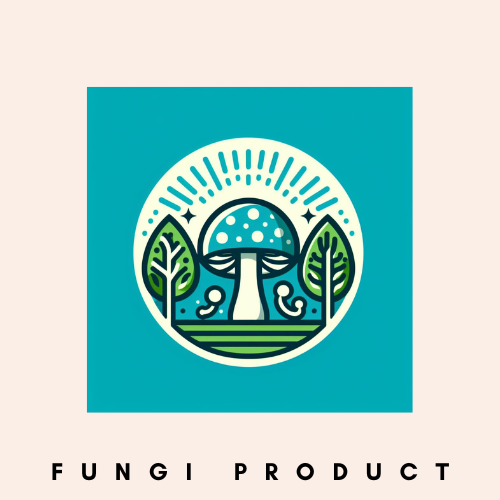I invite you to take a moment to consider a life form that’s usually out of sight yet underpins the very fabric of our ecosystems: fungi. They are not just the mushrooms popping up in your yard, they are a vast and varied kingdom of organisms integral to the balance of life on Earth.

In this article, I’ll share with you ten surprising facts about fungi. These facts not only demonstrate the astonishing diversity and adaptability of fungi but also their significant impact on our world. You may discover things about fungi that completely change the way you look at them … at least that is what I hope to achieve here.
Whether you’re a nature enthusiast or just curious about the world around you, understanding the role of fungi is to appreciate a universe of intricate connections and hidden marvels.
So, I encourage you to keep an open mind as we explore these remarkable organisms together.
We’ll transition smoothly into the paradox of fungal longevity and size.
Ancient organisms that have witnessed the passing of epochs to sprawling networks that challenge our definition of an ‘individual’ being, fungi are full of surprises.
Fascinating Fungal Lifespans and Sizes
When I consider the longevity and sheer scale of some organisms in the kingdom of fungi, I’m always left in awe. You might not be aware that fungi can live for centuries, even millennia. For example, one of the oldest known fungi, found fossilized in rock, has been dated to about 900 million years ago. These ancient life forms have not only lasted through vast stretches of time but also come in astonishing sizes.
The title of the largest organism on Earth doesn’t go to a whale or an elephant but is actually held by a fungus. In the Blue Mountains of Oregon, there’s a honey fungus that spans about 2.4 miles across! This staggering organism exists mostly underground, with a complex network of mycelium, which you can consider the roots of the fungi, spreading far and wide.
However, fungi also brag a diversity in size that I find fascinating. While the giant fungi are making headlines, many members of this kingdom are microscopic in scale, barely visible without the help of a microscope. These tiny fungi play just as crucial a role as their larger relatives in decomposing organic matter and recycling nutrients back into the soil.
Fungi in Symbiosis: Partnerships with Plants and Animals
I might have already piqued your curiosity with the sheer diversity in the sizes and ages of fungi. Yet, the intricacies of fungal relationships with plants and animals are equally fascinating and play a critical role in the balance of nature. Let’s explore this further.
Fungi form mutually beneficial relationships with plants through mycorrhizal connections.
Here’s a striking fact: nearly 90% of all plant species rely on these fungal partnerships for essential nutrients. In exchange, fungi receive carbohydrates that plants produce during photosynthesis. This symbiosis is fundamental for the health of our forests and the productivity of agricultural land. So we are here in a situation of mutualism.
But it’s not just plants that interact closely with fungi, various animal species also engage in unique associations. For instance, certain fungi are known to break down matter that is difficult to digest, aiding in the nutrition of animals like the leaf-cutter ant. However, some relationships can be detrimental, where fungi can act as parasites or pathogens to animals.
Moving into the domain of lichens, it’s truly an alliance worth admiration. These organisms are a complex partnership between fungi and algae or cyanobacteria. While often overlooked, lichens are incredible survivors, capable of enduring extreme environments that would be uninhabitable to most life forms. Their resilience and adaptability could even hold keys to understanding life beyond our planet.

Lichen
The symbiotic nature of fungi doesn’t end here. Transitioning from this topic, I want to take you to something even more illuminating—literally. The phenomenon of bioluminescent fungi not only showcases the beauty of nature’s diversity but may also illuminate the entrepreneurial spirit of innovation in scientific applications.
Up next, we’ll shed some light on these enchanting organisms.
Bioluminescent Fungi: Nature’s Own Nightlights
I often marvel at the phenomenon of bioluminescent fungi. These organisms truly showcase nature’s flair for the astonishing. Fungi that glow in the dark aren’t just the stuff of fantasy, they’re a captivating scientific reality. Their soft green or blue glow can light up forest floors and rotting wood, a sight that’s both eerie and enchanting.
The science behind this glowing characteristic is as fascinating as the sight itself. These fungi use bioluminescence as a way to attract insects and other small animals, which in turn help disperse their spores. It’s a brilliant evolutionary strategy developed over millennia. Researchers are studying these fungi, not only to understand their ecology but also for potential applications such as creating natural lighting sources without electricity.
Bioluminescent fungi are spread across the globe, with over 70 species identified. Some of the most well-known include the ghost fungus in Australia and the jack-o’-lantern mushroom in North America. For the adventurous souls who seek them, these fungi provide an unforgettable natural spectacle – illuminating the nighttime world around them.

“Blue, Blue, Electric Blue … That’s the color of the house where I will live ” – David Bowie
As I transition from the intriguing topic of bioluminescent fungi, it’s clear that their glow is
just a hint of fungi’s potential. The next topic of discussion, which is just as enthrailing, is their surprising applications in medicine and technology. Stay with me as I explore how these organisms are not just nature’s artisans but also innovators that could shape our future.
Conclusion: Fungi as Unsung Heroes of the Natural World
I hope by now you see fungi in a new light. These extraordinary organisms are much more than just mushrooms sprouting in the forest or mold lurking in a forgotten loaf of bread.
We’ve journeyed through some astonishing facts that illustrate the hidden significance of fungi. From sustaining vast ecosystems with their symbiotic relationships to lighting up the night with their bioluminescence, every fact underlines the remarkable versatility of this kingdom.
But it’s not just about their natural wonder. The impact of fungi on human advancement cannot be overstated. Consider how penicillin, derived from a humble fungus, revolutionized medicine and saved countless lives.
As we peer into the future, the potential of fungi seems boundless. Innovative applications in biodegradable materials and possibly in the terraforming of other planets stand testament to their untapped potential.
It’s apparent that conservation efforts for these unsung heroes are vital. Preserving fungal biodiversity is not merely an environmental responsibility but a necessity to ensure the continuity of their benefits for future generations.
So, the next time you encounter a mushroom or spot a moldy patch, don’t eat it but remember the vast and intricate roles these fascinating entities play. Perhaps, share a fact or two about fungi. They certainly deserve a spot in our conversations about the marvels of the natural world.

Andre Raymond
